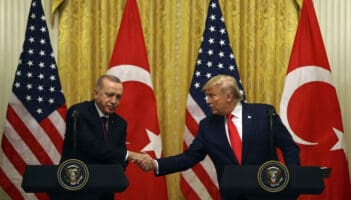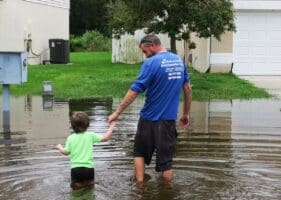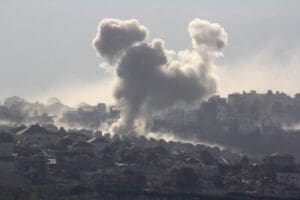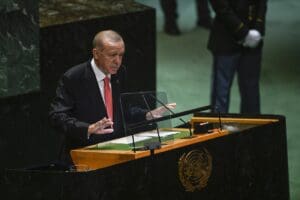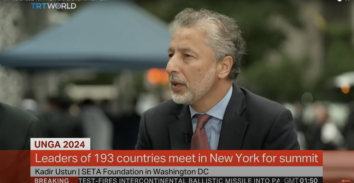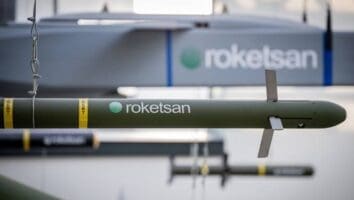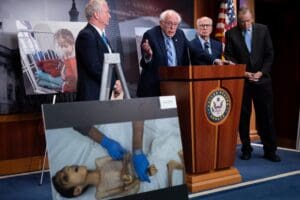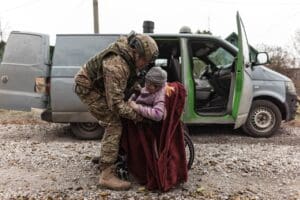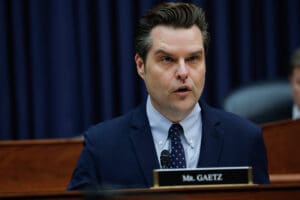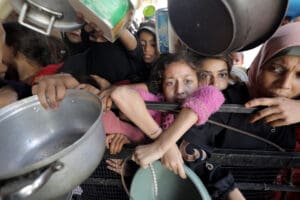Possible Pitfalls of Syrian Safe Zones
During the first week of Trump’s presidency, a draft executive order directing the U.S. Department of Defense and State Department to explore and develop a strategy to create safe zones in and around Syria for refugees circulated online. If President Trump were to order such an action, it would be a marked shift from previous U.S. Syrian policy. The draft order was accompanied by reports that Trump will task Secretary of Defense James Mattis and the Department of Defense with identifying a new strategy to intensify the fight against ISIS. Questions abound, however, about how such safe zones or no-fly zones would be implemented or received by other countries and groups involved in Syrian conflict.
Under the Obama administration, safe zones and no-fly zones were a nonstarter. Despite support for the idea from various allies, the Obama administration never appeared to seriously consider the option. Much of the Obama administration’s recalcitrance seems to have been driven by concerns that such an operation would require extensive U.S. involvement. Speaking to a Senate panel in February of 2016, then-Secretary of State John Kerry cited estimates from the Pentagon that establishing a safe zone inside Syria would require between 15,000 to 30,000 U.S. troops. In a letter to Senate members in 2013, then-Joint Chiefs Chairman Gen. Martin Dempsey asserted that establishing a no fly zone or a buffer zone would cost up to $1 billion each per month to maintain.
Questions abound about how such safe zones or no-fly zones would be implemented or received by other countries and groups involved in Syrian conflict.
The creation of safe zones is not a new idea and has been supported in the past by various U.S. allies. Turkey, a NATO member and bilateral ally, repeatedly called for the establishment of safe zones or no-fly zones in Syria. Back in 2015, there were even reports that Turkey and the U.S. had reached an agreement to establish a safe zone along the Turkey-Syria border. While that safe zone never materialized, Turkey has continued to support the idea, reaffirming their position after a phone call between U.S. President Trump and Turkish President Recep Tayyip Erdogan in the first week of February. Turkey’s operation Euphrates Shield has already created something akin to a safe zone along parts of the border. In April of 2016, German Prime Minister Angela Merkel expressed tentative support for the idea, though Obama quickly spoke out against it at a joint press conference. France, another close U.S. ally, had previously suggested the possibility of safe zones for refugees and expressed interest in exploring Turkey’s 2015 proposal.
The U.S. government bureaucracy, particularly the military and the State Department, were some of the biggest obstacles to previous calls for safe zones. Late 2015, officials from the State Department told Congress that there was “no viable option on the table, nor recommended by the Department of Defense,” to establish a safe zone in Syria. As noted, Dempsey had pointed out the high cost of establishing a no-fly zone or a buffer zone. He also warned that forces establishing those zones could come under Syrian attack. Testifying to Congress in December 2015, then-Defense Secretary Ashton Carter and U.S. Air Force General Paul Selva both asserted that a safe zone would carry a risk of conflict with Syria and Russia and that it would require a large amount of troops.
Perhaps the most pressing question about Trump’s recent proposal is whether the situation has changed enough to where a safe zone could be successfully created. American allies in the region have reportedly responded positively to the announcement. In a readout of Trump’s call with King Salman of Saudi Arabia on January 29, the White House said that the Saudi king agreed to support the safe zones. The government of Qatar, a U.S. ally, said that it “welcomed” the decision in a statement to its state news agency QNA. According to another readout by the White House, Abu Dhabi Crown Prince Sheikh Muhammad bin Zayid Al Nuhayyan agreed to support the initiative as well.
However, two of the most important outside nations took a wait-and-see approach, reserving judgment for the time being. Turkey said that it will wait for the results of the State Department and Department of Defense’s evaluation of possibilities to judge the proposal. The Russian government, a key backer of the Assad regime, said that the Trump administration had not consulted it about the proposal, and warned the U.S. not to “further aggravate the situation” by not fully considering the situation. Russian Foreign Minister Sergei Lavrov suggested that a proposal would be acceptable if conducted with UN cooperation and the acceptance of the Assad regime. Lavrov also made it clear that he viewed this proposal as not allowing for “an alternative Syrian government” or continuing “regime change.” Meanwhile, Syrian rebel groups said they would await U.S. action, as they have heard previous U.S. statements that have yet to be fulfilled. The Assad regime issued a statement on January 30 warning that any safe zone established without its consent would be “unsafe” and a violation of Syrian sovereignty.
In the north, it is unclear what sort of safe zone would be established. Since the beginning of Operation Euphrates Shield, the Turkish-backed Free Syrian Army (FSA) has captured territory in northern Syria, creating a de facto safe zone. However, the establishment of a formalized safe zone would require the resolution of tensions between Turkey and the Syrian Democratic Forces (SDF), dominated by the PKK-linked YPG forces that are considered a terrorist organization by Turkey. Before leaving office, the Obama administration had authorized increased U.S. support for the Turkish operation but had also created a plan to pass to the next administration that would have seen increased support for the SDF to take Raqqa. The Trump administration has reportedly scrapped that proposal, instead directing Mattis and the military leadership to instead come up with a new plan for Syria over the next thirty days. The Trump administration did however allow the delivery of several armored vehicles and supplies to the SDF and rebels have spoken of increased support since Trump took office.
Though the SDF holds a sizeable territory in northwest Syria, a formalized, U.S.-protected safe zone based around the group would likely cause serious complications with Turkey. The Turkish government has made its concerns about the SDF clear and would see such a zone as a safe haven for PKK terrorists. The response from the Assad regime is even more unclear. While a recent Russian-backed draft constitution for Syria called for “cultural autonomy” for the Kurds, the Assad regime reportedly rejected that proposition. The Turkish-backed FSA meanwhile is supported by the U.S. and has received Russian air support, but the FSA remains opposed to Assad. There are concerns that the Assad regime’s recent push towards al-Bab will lead to clashes between the regime and Turkish-backed FSA forces. It is unclear if the Russian government would be willing to force their Syrian ally to accept the creation of a safe zone that allowed the presence of rebel groups.
Meanwhile, in the south, the Trump administration will need to find an acceptable proxy force if it wants to see a safe zone that doesn’t rely entirely on U.S. troops. Some Syria watchers and experts have suggested that the U.S. expand support for the Southern Front. The U.S. has reportedly used the Military Operations Command in Amman, Jordan to funnel support to the Southern Front at times, though far less than it has given to groups in the north. Though the group has been lauded as both moderate and supported by U.S. allies, there are a number of concerns about using it as an effective proxy. For one, at least some of the fighters associated with the group remain opposed to Assad. Relying on this group would mean supporting a safe zone that the Assad regime will consider a safe haven for terrorists, once again running the risk of conflict. There are also a number of competing rebel groups in the region that could complicate any Southern Front expansion.
This is not an exhaustive exploration of possible complications of a safe zone in Syria. There are concerns as to who would defend the safe zones on the ground; whether they would involve no fly zones; would they be unilaterally created or with foreign cooperation; who would pay for them; would the safe zones eventually return to Syrian government control (not to mention the question of what that government will look like); and so on. The reaction to Trump’s executive order has highlighted the difficulty that the U.S. will face in implementing any sort of safe zone. Despite that, or perhaps because of that, it is not so unreasonable for Trump to ask the State Department and Department of Defense to come up with a plan. A well-examined and reasonable effort should take into consideration possible conflicts not only with the Assad regime and its allies, but also between U.S. allies like Turkey. If it is well-planned and coordinated with allies, a safe zone could help alleviate the suffering of many Syrians caught up in the war, while also mitigating the current refugee crisis affecting U.S. allies in the Middle East and Europe. If not, a poorly planned safe zone could bring further harm to civilians and could create new points of conflict.

